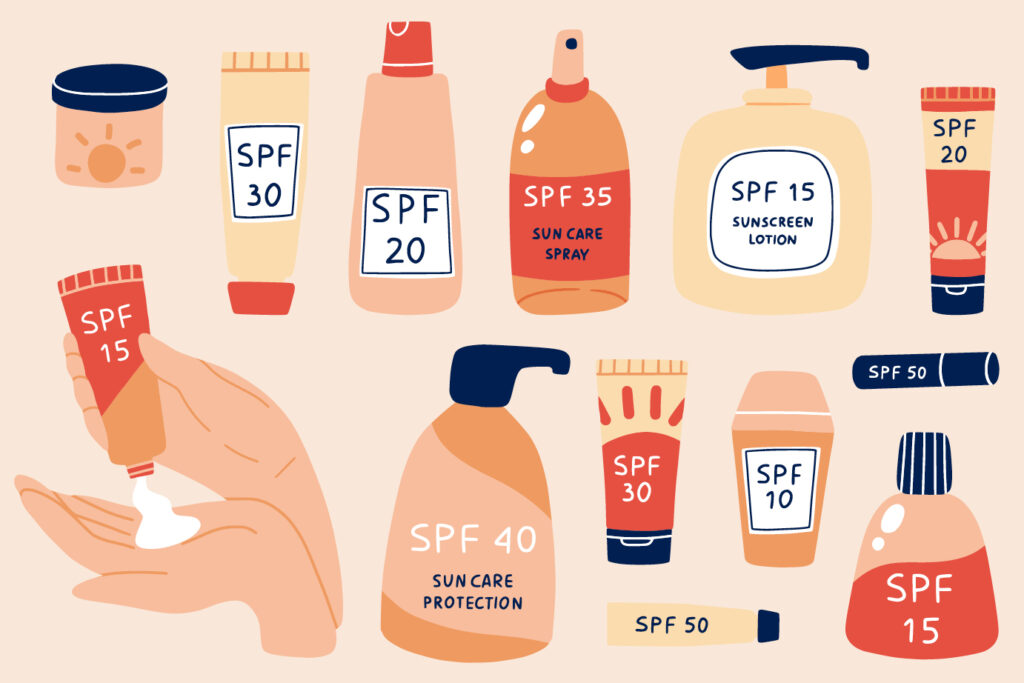Summer is finally here, and as we spend more time outdoors in the direct sun, an efficient sunscreen is a must-have. But what makes a sunscreen efficient, and what should I look for?

Is it possible to achieve the recommended amount of sunscreen?
Most people apply less than half of the recommended amount of sunscreen, which vastly reduces the protection. You need to apply the recommended amount to achieve the SPF value stated on the bottle. Eg: SPF 50 protects against 98% of UVB rays. If you use 50% of the recommended amount of SPF 50, you don’t get SPF 25, but 49% protection = SPF 2!
Does the sunscreen have high UVA protection?
UVA rays stand for 95% of the daylight and are with us all year round. They penetrate through glass and clouds. UVA goes deeper into the skin layer and causes damage to the skin’s DNA, resulting in pigmentation and premature ageing. UVA may also cause skin cancer in the long run.
SPF only tells you the protection against UVB. That is why you need to look for UVA symbols on your sunscreen. The European standardised UVA test tells you that sunscreen has at least 33% UVA protection in relation to the SPF value. Apart from the European UVA test, there are several others on the market. Boots Star rating Test is one of them and tells more precisely how high the UVA protection is. It measures the UVA/UVB ratio, which is presented with stars ranging from 1-5. Five stars mean you have over 90% UVA protection.
Is the sunscreen developed for sensitive skin?
In the last couple of years, there has been an immense increase in people experiencing skin sensitivity. Some skincare ingredients can do more harm than good and cause irritation, allergies or sensitivity. Sun, wind salt and chlorinated water are already contributing factors to skin sensitivity. Therefore, it’s unnecessary to add perfumes, alcohol or preservatives to sunscreen and after-sun products.
Perfumes, preservatives and alcohol are three ingredients that can cause sensitivity and weaken the skin barrier. Perfume is added to skincare to provide a pleasant scent. It’s also often added to sunscreens to camouflage the odour of strong UV filters. Unfortunately, perfumes can cause allergies and irritation. Alcohol is used to make the thick UV filters more absorbable. However, alcohol weakens the skin barrier and has a drying-out effect. In the long run, alcohol makes the skin overproduce sebum, leading to clogged pores and breakouts. For this reason, it’s preferable to use sunscreens developed for sensitive skin to avoid developing skin sensitivity.
How often do you need to reapply the sunscreen?
The standard recommendation is to re-apply your sunscreen every other hour, which will help maintain the SPF protection stated on your bottle. The reasons for frequent application are various; firstly, we don’t apply enough and miss certain areas. The protection can also be affected by water or sweat.
Is the sunscreen water resistant/extra water resistant?
A water-resistant sunscreen means that the SPF value only goes down to 50% of the value after 2×20 min in water + 2×15 min drying time. A very water-resistant sunscreen only goes down to 50% of the SPF value after; 4x 20 min in water. Water-resistant and very water-resistant are the only standardised tests showing how long-lasting a sunscreen is.
How long does the sunscreen last?
Most sunscreen has an expiration date of 6-12 months after opening the bottle. Remember that UV filters break down in contact with oxygen and thus don’t give the same protection one year after opening the bottle.
Does the product have unnecessary packaging?
From an environmental perspective, it’s good to consider if the product is recyclable. Is there unnecessary packaging around the product?
